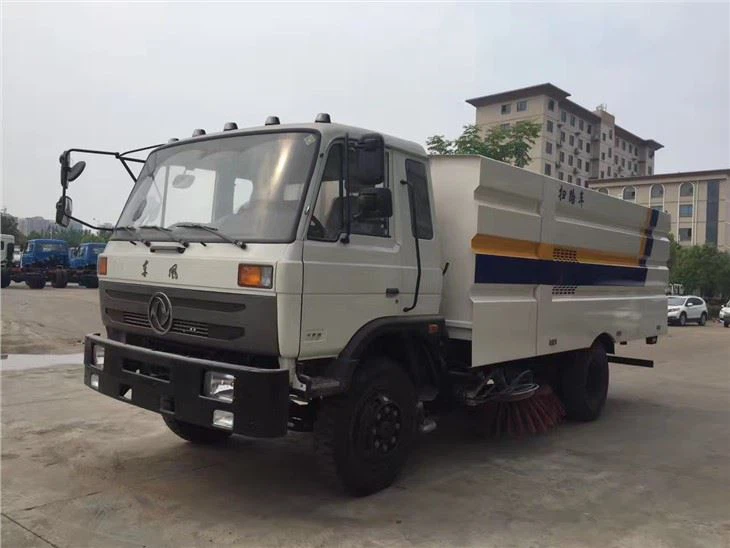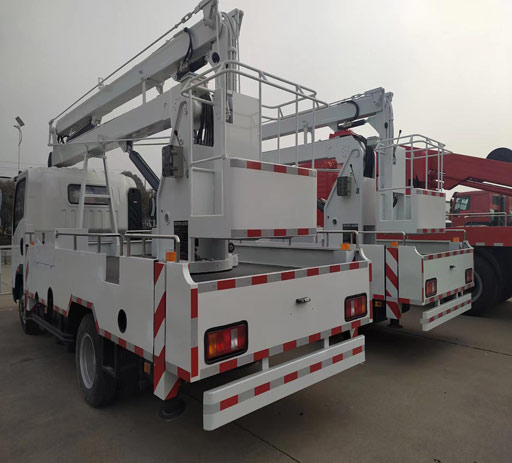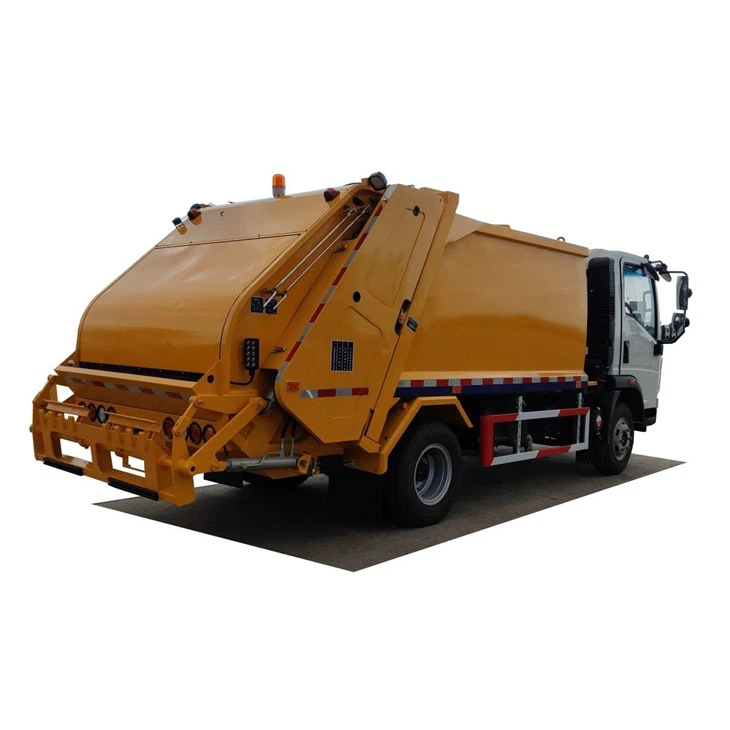Everything You Need to Know About Street Cleaning Vehicles

Street cleaning vehicles play a crucial role in maintaining urban cleanliness and hygiene. These specialized machines help to keep our streets free from debris, litter, and dust, contributing significantly to the aesthetics and health of urban environments. In this article, we will explore various aspects of street cleaning vehicles, including their types, operations, benefits, and maintenance tips. We will also look at the future of these vehicles as technology advances. Whether you are a city planner, a resident concerned about local cleanliness, or just curious, this comprehensive guide will provide valuable insights.
The Importance of Street Cleaning Vehicles
Street cleaning vehicles serve multiple purposes that extend beyond mere aesthetics. Their significance can be understood through the following facets:
1. Enhancing Public Health
Regular street cleaning reduces the risk of diseases by eliminating waste and contaminants. Stagnant debris can harbor bacteria and pests, contributing to public health risks.
2. Protecting the Environment
Proper street cleaning prevents pollutants from entering stormwater drains, minimizing water pollution and protecting local ecosystems. This is particularly crucial in urban areas where vegetation is scarce, and pollutants can easily accumulate.
3. Improving Urban Aesthetics
A clean city is visually appealing and contributes to a positive public perception. This can enhance property values and attract tourism, making the city a more inviting place for residents and visitors alike.
4. Promoting Road Safety
Debris on roadways can pose hazards to drivers and pedestrians. Regular cleaning reduces the risk of accidents by ensuring safe passage for all road users.
Types of Street Cleaning Vehicles
Street cleaning vehicles come in various types, each designed to address specific needs. Here are the most common types:
1. Vacuum Sweepers
Vacuum sweepers use suction to collect dirt, leaves, and debris from streets. They are highly efficient for urban environments and can clean both wet and dry materials. They often have one or more rotating brushes that fling debris into a hopper, where it is then sucked in by a powerful vacuum.
2. Mechanical Sweepers
These vehicles primarily use mechanical brushes to sweep debris into a catchment. They are less effective for fine dust but excel in environments with larger debris, such as leaves and litter.
3. Combination Sweepers
As the name suggests, combination sweepers combine the functionalities of vacuum and mechanical sweepers. They are versatile and can handle various materials, making them ideal for different cleaning tasks.
4. Water Spray Sweepers
Water spray sweepers use water to control dust and debris while cleaning. The system helps to minimize dust clouds, especially in dry environments, making the cleaning process more effective and environmentally friendly.
5. High-Pressure Wash Vehicles
These vehicles utilize high-pressure water jets to clean surfaces, especially in areas with stubborn stains or grime. They are ideal for cleaning pavements, sidewalks, and other hard surfaces.
6. Compact Sweepers
Compact sweepers are smaller vehicles that can navigate narrow streets or congested areas. They offer the advantage of reaching smaller spaces that traditional sweepers might miss.

Key Features of Street Cleaning Vehicles
1. Suction Power
A vital feature of street cleaning vehicles, the suction power determines the effectiveness of debris collection. Vehicles with higher horsepower generally perform better under challenging conditions.
2. Brush Systems
Brush systems can vary widely. Some vehicles might have multiple rotating brushes to cover a broader area, while others may have specialized brushes for particular tasks, like street corner cleaning.
3. Waste Storage Capacity
The size of the debris hopper is essential for determining how much waste a vehicle can carry before needing to be emptied. Larger capacities allow continuous operation without frequent interruptions.
4. Water Tanks
For vehicles with water spray systems, the size of the water tank is crucial, especially in dry climates where dust control is needed. An adequate water supply can enhance cleaning efficiency.
5. Mobility and Maneuverability
Some areas, such as residential streets and parking lots, require vehicles that can fit into narrow lanes. Therefore, compact and versatile designs are necessary for comprehensive street cleaning.
6. Environmental Considerations
With growing concerns over emissions, many modern street cleaning vehicles are designed to meet stringent environmental standards. Innovations include electric-powered vehicles and those using alternative fuels.
How Street Cleaning Vehicles Operate
The operation of street cleaning vehicles typically follows a systematic approach:
1. Pre-Cleaning Checks
Operators conduct a thorough inspection of the vehicle before starting. This includes checking fluid levels, inspecting the brush systems, and ensuring the suction mechanism is functional.
2. Route Planning
Efficient cleaning requires planning the route. Cities often utilize software that analyses traffic patterns and waste levels to optimize cleaning routes.
3. Cleaning Process
Once on the route, operators use various functions depending on the vehicle type. Vacuum sweepers rely on suction and brushes working simultaneously, while mechanical sweepers might focus on sweeping first, followed by collection.
4. Waste Disposal
Once the debris hopper is full, operators must dispose of the collected waste responsibly. This often involves depositing the waste in designated municipal facilities.
5. Routine Maintenance
After cleaning operations, routine maintenance checks are conducted to ensure the vehicle remains in optimal working condition. This includes cleaning filters, checking hoses, and inspecting brush wear.
Challenges Faced by Street Cleaning Vehicles
Despite their importance, street cleaning vehicles face several challenges that can impact their efficiency:
1. Budget Constraints
Many municipalities experience budget limitations that affect the purchasing and maintenance of cleaning vehicles. This can lead to older, less efficient equipment in operation.
2. Weather Conditions
Extreme weather can impact the performance of street cleaning vehicles. Heavy rainfall may lead to increased debris from runoff, while snow can obstruct access to streets.
3. Public Behavior
Improper disposal of waste or other public behaviors can complicate cleaning efforts. Littering can overwhelm street cleaning efforts, requiring more frequent service.
4. Road Infrastructure
Potholes, roadwork, and other infrastructure issues can hinder the movement of street cleaning vehicles, impacting their ability to clean efficiently.
Future Trends in Street Cleaning Vehicles
The street cleaning vehicle industry is evolving, with several trends emerging:

1. Increased Automation
As technology advances, automated street cleaning vehicles are becoming more common. These machines can navigate pre-defined routes, making operations cheaper and more efficient.
2. Electric and Hybrid Vehicles
With a growing emphasis on sustainability, electric and hybrid street cleaning vehicles are being developed. They produce fewer emissions and operate silently, reducing noise pollution in urban areas.
3. Smart Technology Integration
Integrating IoT (Internet of Things) technology allows municipalities to monitor streets effectively and manage cleaning schedules based on real-time data.
4. Advanced Cleaning Technologies
Emerging technologies include high-efficiency particulate air (HEPA) filters for better dust control and the use of drones to assess cleaning needs remotely.
Practical Examples of Street Cleaning Vehicles in Action
1. Case Study: New York City
New York City employs a fleet of over 300 street cleaning vehicles, including vacuum and mechanical sweepers. Their cleaning operations are supplemented by an extensive public awareness campaign, encouraging residents to keep streets tidy.
2. Case Study: San Francisco
San Francisco’s street cleaning program reflects sustainability principles, with its fleet comprising electric-powered vehicles. The city has successfully reduced dust and debris through regular street sweeping schedules.
3. Case Study: London
London utilizes a combination of traditional street cleaning methods alongside state-of-the-art machinery. The use of specialized equipment enables them to navigate the city’s historic streets while maintaining cleanliness effectively.
Maintenance Tips for Street Cleaning Vehicles
1. Regular Inspections
Regular checks of the vehicle’s critical systems, including brushes, filters, and tanks, are essential for reliable operation. Create a routine maintenance schedule.

2. Clean Filters and Hoppers
Ensure that filters are cleaned or replaced as recommended by the manufacturer. This maintains the suction efficiency of vacuum systems.
3. Monitor for Wear and Tear
Operators should be trained to identify signs of wear on components, including brushes and belts, and address replacements promptly to avoid operational issues.
4. Fluid Levels
Regularly check and maintain appropriate fluid levels, including hydraulic fluid and water for spray systems, to ensure smooth operation.
5. Document Maintenance Activities
Keep detailed records of maintenance activities to track repairs and schedule timely servicing. This also helps in budgeting for replacements.
FAQs about Street Cleaning Vehicles
1. How often are street cleaning vehicles operated in urban areas?
The frequency of street cleaning varies by city and can range from daily to weekly, depending on the volume of traffic and accumulated debris.
2. What type of debris can street cleaning vehicles effectively remove?
Street cleaning vehicles are designed to collect a variety of debris, including leaves, litter, sand, and light snow, depending on the vehicle type.
3. Are electric street cleaning vehicles more effective than traditional gasoline models?
Electric vehicles can be just as effective as gasoline models and often have the added benefits of reduced emissions and noise pollution, making them preferable in urban areas.
4. How do municipalities decide which type of street cleaning vehicle to purchase?
Factors such as the size of the area to be cleaned, debris types, environmental regulations, and budget constraints play a role in determining the appropriate type of street cleaning vehicle.
5. Can street cleaning vehicles operate at night?
Yes, many cities schedule cleaning operations at night to minimize disruptions for residents and businesses, especially in busy urban areas.
6. What innovations are being incorporated into street cleaning vehicles?
Innovations include automation, IoT integration, and the utilization of advanced cleaning technologies, such as HEPA filters and water recycling systems.
